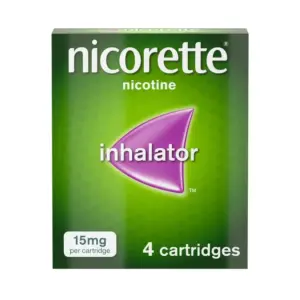Baby and Toddler Multivitamins: What Parents Should Look For on the Label
31 Dec 2025Healthy gums rely on daily plaque control, the right fluoride, and a routine you can keep up. Most UK picks fall into two groups: desensitising pastes for exposed dentine and gum-health pastes aimed at bleeding gums and gingivitis. Below, you’ll see what each type does, how to scan a label, and how to build a routine that supports gum health long term. You can browse by toothpaste type (not brand) here: Toothpastes at Astir Care.
Healthy gums 101
- Brush twice daily for two minutes with a fluoride toothpaste; most adults should use 1,350–1,500 ppm fluoride.
- Spit, don’t rinse after brushing so fluoride stays on teeth; use mouthwash at a different time of day.
- Add interdental cleaning with brushes or floss; plaque between teeth fuels gingivitis.
- If gums bleed, book a dental check-up; ongoing bleeding needs professional advice.
- Keep a simple gum health routine: gentle pressure, short strokes along the gumline.
Two popular toothpaste types (no brand push)
Desensitising toothpastes
- Aim: calm sensitivity linked to exposed dentine and open tubules.
- Typical actives: stannous fluoride (SnF₂), arginine + calcium carbonate (CaCO₃), or potassium nitrate.
- How they work: stannous fluoride creates protective layers and adds fluoride; arginine with CaCO₃ helps block tubules; potassium salts aim to reduce nerve response.
- Good for: sharp zings from cold air, iced drinks, or sweet foods; recession and enamel wear.
- Usage tip: give any sensitive formula 4–8 weeks and track results; sensitivity relief builds with consistent use.
Gum-health toothpastes
- Aim: reduce plaque and gingival inflammation day to day.
- Typical actives: stannous fluoride for antibacterial support, sometimes zinc or bicarbonate to disrupt plaque.
- How they work: stannous ions suppress bacterial activity while fluoride supports remineralisation.
- Good for: bleeding on brushing, puffy gums, or a history of gingivitis.
- Usage tip: pair with interdental brushes for faster gains; technique matters more than scrubbing hard.
Ingredient deep-dive: what helps
- Fluoride (1,350–1,500 ppm): baseline cavity protection for UK adults; look for 1,450 ppm on many packs.
- Stannous fluoride (SnF₂): antibacterial plus anti-gingivitis action; also helps with sensitivity by forming protective layers.
- Arginine + CaCO₃: supports sensitivity relief by occluding dentinal tubules linked to pain on cold.
- Potassium nitrate: common in sensitive pastes; people respond differently, so review progress after 4–8 weeks.
- SLS-free formulas: if you get mouth ulcers, an SLS-free toothpaste may suit you better than a very foamy one.
- Low-to-moderate abrasivity (RDA): daily safety sits around ≤250 RDA; pick a lower RDA if you have recession or exposed root surfaces.
If your gums bleed, choose smart
- Prioritise plaque control: pick a gum disease toothpaste with stannous fluoride as your daily base.
- Technique before tools: soften grip, angle bristles to the gumline, and take slow passes on each tooth.
- Add interdental cleaning: use the largest interdental brush that fits each space; floss tight contacts.
- Short-term antiseptics: a chlorhexidine mouthwash can help for a short spell under guidance; it can stain with long use.
- Lifestyle wins: cut sugar frequency, drink water after snacks, and seek help to stop smoking.
Quick match-ups: which type makes sense
- Sensitivity plus bleeding: start with a gum-health paste containing stannous fluoride for plaque control, then layer a desensitising paste if pain persists.
- Sensitivity only: try arginine/CaCO₃ or SnF₂ sensitive formulas for 4–8 weeks; if pain remains, book a dental exam to rule out decay or cracks.
- Bleeding or puffy gums: make stannous fluoride your daily anchor and add interdental cleaning every day; review brushing technique with a hygienist.
How to read a UK toothpaste label
- Fluoride: aim for 1,450 ppm fluoride in most adult pastes in the UK.
- Actives: note SnF₂, arginine, or potassium nitrate and match to your needs (gum care vs sensitivity).
- Abrasivity: check brand literature for RDA where available; pick lower if you have recession or exposed dentine.
- Foaming agent: consider SLS-free toothpaste if ulcers are an issue.
- Claims: “whitening” usually means stain control; ensure the fluoride range still sits at 1,350–1,500 ppm.
A routine that supports gum health
- Night + one other time: brush last thing at night and once more daily with a 1450 ppm fluoride toothpaste.
- Spit, don’t rinse: keep fluoride on teeth; use mouthwash at a different time.
- Interdental daily: target the spaces where plaque tends to hide.
- Refresh your tools: replace a frayed brush head; consider a powered brush if manual brushing is inconsistent.
- Check-ups: if gums keep bleeding after a few weeks of good home care, book a professional cleaning and advice.
Shop By Toothpaste Type Here
Choose the type, not just the logo. For gum concerns, lean on stannous fluoride as your daily anchor and commit to interdental cleaning. For sensitivity, try arginine/CaCO₃ or SnF₂ pastes and give them 4–8 weeks to work. Keep fluoride in the 1,350–1,500 ppm range, brush with gentle pressure at the gumline, and don’t rinse straight after brushing. When you are ready to compare gum-care and sensitive options side by side, shop by toothpastes type.









Leave a Comment